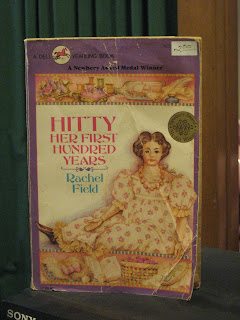
After my son read Holes, he came to ask me about the yellow-spotted poisonous lizards with the black teeth and the milky-white tongue. Inserted into a story that seems realistic on the outside, the presence of the lizards seems perfectly reasonable to anyone who hasn’t studied reptiles. And yet, Hole’s back-story is too coincidental to be realistic. To allow yourself to enjoy the tale, you must accept what is presented without protesting too much. Then you can relax and enjoy a most enjoyable and heartwarming tale.
We’ve all heard about the desert boot camps that incorrigible boys and girls are sent to for reform. Through an accident of fate, innocent Stanley Yelnats is sent to Camp Green Lake, as punishment for stealing. Camp Green Lake is on a desert pan, far away from anything, where “If you take a bad boy and make him dig a hole every day in the hot sun, it will turn him into a good boy.” The conditions are brutal and realistically covered. Stanley’s cabin mates are a tough bunch, and not very friendly. But Stanley learns the ropes and is surviving. Things start coming together for him, and the story starts heating up when he realizes that the Warden and Mr. Sir are not having the boys dig holes randomly; they are looking for something.
Flashbacks in history help tell the unfolding story of both Camp Green Lake and Stanley’s ancestors. The fable-like histories are told in such a matter-of-fact way that you can accept them as the reality for this book.
I like Stanley. He is no super-kid; he starts out soft and overweight, without confidence. He is a good-hearted boy who, because he doesn’t want to worry them, writes his parents glowing reviews about the camp, details which are humorous because they are so exaggerated from reality.
Stanley’s epiphany of how his life has changed for the better comes during his escape, and his rescue of another boy. He still has no idea how he can come out of his situation, but,
“…Stanley lay awake staring up at the star-filled sky. He was too happy to fall asleep. He knew he had no reason to be happy…”
“He liked himself now.”
It’s a beautiful moment in the book. If you’ve ever worked through a disastrous situation with a friend or two, then you know the intense bonding and the kind of pleasure that can result.
I found this book in the thrift store. I would have preferred the earlier cover with Lane Smith’s illustrations (Stinky Cheese Man, The True Story of the Three Little Pigs) but alas, the cover is from the Disney motion picture of Holes.








